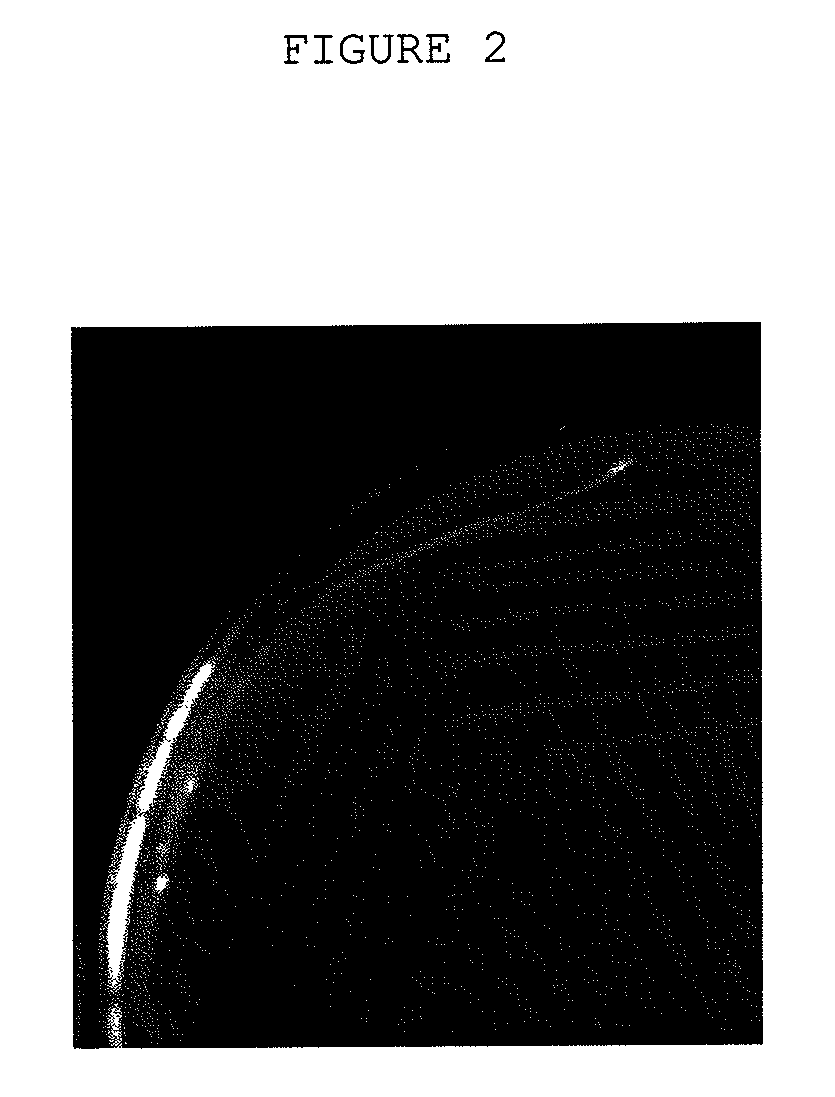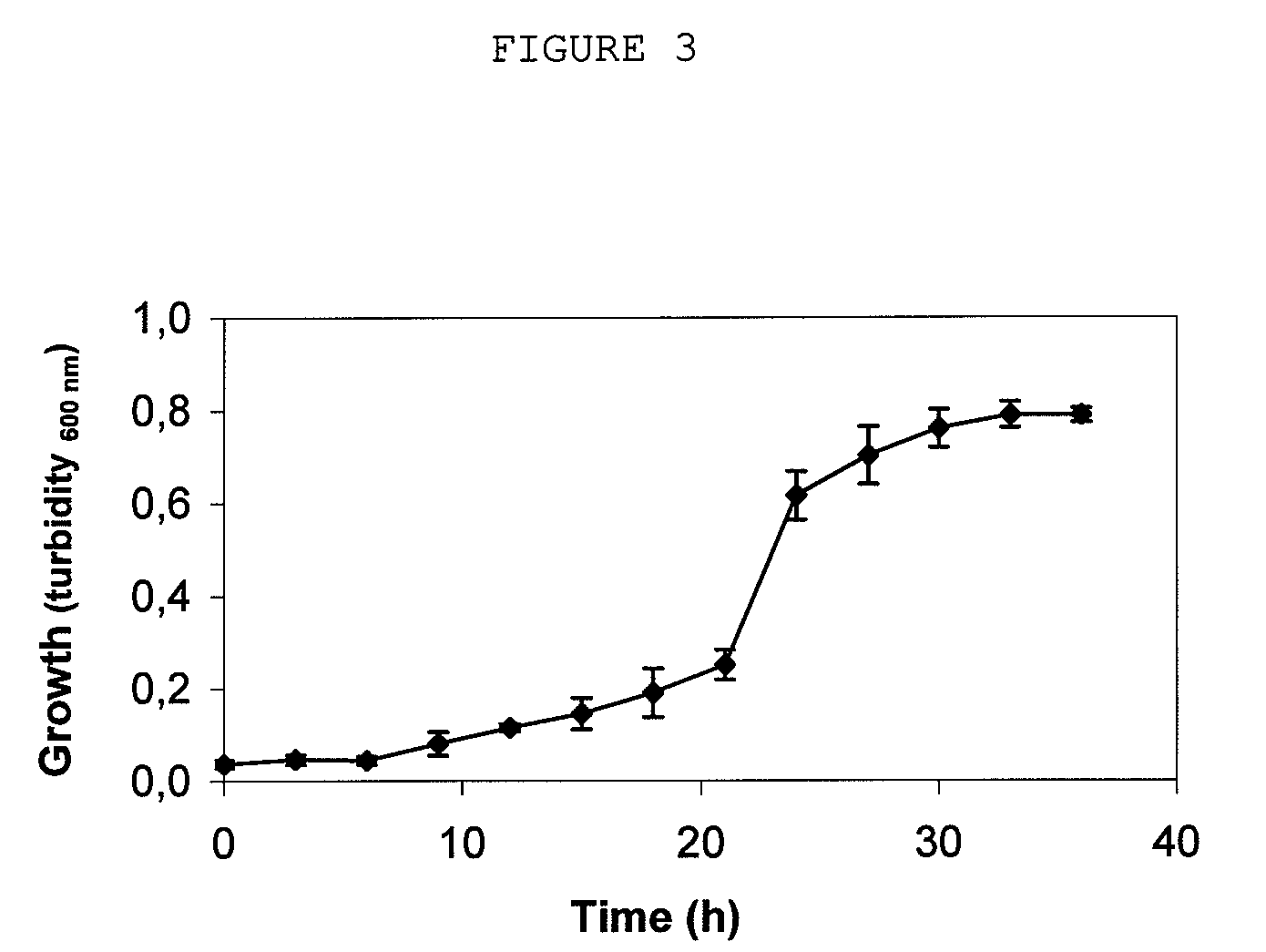S-triazine-herbicide-degrading bacteria, product for the bioremediation and method of bioremediation
a technology of s-triazine and herbicide, which is applied in the direction of biocide, plant growth regulator, solid waste disposal, etc., can solve the problems of urgent attention, serious soil and ground water contamination, environmental contamination by s-triazine, etc., and achieves rapid growth, high cellular densities, and easy cultivation.
- Summary
- Abstract
- Description
- Claims
- Application Information
AI Technical Summary
Benefits of technology
Problems solved by technology
Method used
Image
Examples
example 1
Isolation of Pseudomonas sp. Strain MHP41
[0066]The isolation of Pseudomonas sp. strain MHP41 was carried out by enrichment using simazine as the sole nitrogen source. For the isolation AM minimal medium (Table 3) was used, which has a saline fraction providing the micronutrients, succinate as the sole carbon source and saturated simazine as the sole nitrogen source. For the initial enrichment culture, samples were taken directly from agricultural soils. Cultures were incubated at 28° C. and then subcultures were grown. From these subcultures, bacteria were isolated in minimal agar plates using simazine as the sole nitrogen source. Individual colonies were isolated from the agar plates. These strains were conserved in glycerol (20%) at −24° C.
[0067]After this procedure, the native strain described in the present invention was obtained, i.e. Pseudomonas sp. MHP41. This bacterial strain has the capability to grow using simazine as the sole only nitrogen source. This strain was deposite...
example 2
Maintenance and Conservation of the Product Containing Pseudomonas sp. MHP41
[0068]Pseudomonas sp. strain MHP41 is kept viable in the laboratory by culturing in different minimal media which composition is detailed in Table 3.
[0069]As alternative conservation methods, lyophilization processes and an encapsulation processes using sodium alginate was developed for the strain. For the lyophilization process, a protective sterile complex medium such as bovine serum, powdered defatted milk or yeast extract, an amino acid such as monosodium glutamate, a fatty acid such as meso-inositol, a carbohydrate such as glucose, lactose, raffinose or mannitol and also glycerol or dimethylsulfoxide are used.
[0070]In all the culture media and conservation methods, the viability and biodegrading capability of Pseudomonas sp. strain MHP41 is not reduced.
[0071]
TABLE 3Table 3. Minimal media formulations for maintenanceof the native Pseudomonas sp. strain MHP41. To prepare solidmedia it is supplemented with...
example 3
Degradation of the Simazine Compound by Pseudomonas sp. MHP41
[0072]The ability of Pseudomonas sp. MHP41 to degrade simazine was assessed. Therefore, the bacterial strain MHP41 was cultured in AM medium using simazine as the sole nitrogen source at 30° C. for 16-20 h until the exponential phase (turbidity at 600 nm of 0.3; 7×107 CFU / ml). Cells were centrifuged and washed with sodium phosphate buffer [60 mM sodium phosphate (pH 7.0), 0.5 g NaCl liter−1] and resuspended in U buffer [10 mM sodium phosphate (pH 7.0), 0.1 mM MgSO4] into a turbidity at 600 nm of 2.5-3.0. The cultures were incubated at 30° C. with simazine at a final concentration of 0.06 mM. Culture medium without bacteria was used as a control. Samples were taken at 15 minutes intervals and these were centrifuged for 1 minute at 13,000 rpm. Simazine concentration was quantified by measuring absorbance at 225 nm using a spectrophotometer. The strain was able to degrade about 50% of the simazine compound after one hour of i...
PUM
| Property | Measurement | Unit |
|---|---|---|
| time | aaaaa | aaaaa |
| time | aaaaa | aaaaa |
| period of time | aaaaa | aaaaa |
Abstract
Description
Claims
Application Information
 Login to View More
Login to View More - R&D
- Intellectual Property
- Life Sciences
- Materials
- Tech Scout
- Unparalleled Data Quality
- Higher Quality Content
- 60% Fewer Hallucinations
Browse by: Latest US Patents, China's latest patents, Technical Efficacy Thesaurus, Application Domain, Technology Topic, Popular Technical Reports.
© 2025 PatSnap. All rights reserved.Legal|Privacy policy|Modern Slavery Act Transparency Statement|Sitemap|About US| Contact US: help@patsnap.com



